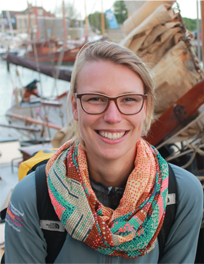European Lifeboat Crews Share Experiences

Lifeboat Crew members from 11 countries have been involved in a European Exchange Programme designed to help reduce the numbers of people losing their lives in Europe’s waters.
With the aim of exchanging knowledge, sharing ideas and building relationships between the voluntary institutions, the project is now in its third year.
Instigated by the International Maritime Rescue Federation (IMRF) and the Search and Rescue (SAR) organization KNRM from the Netherlands, the program has four clear objectives.
The first is to exchange practical experience and best practice between European Maritime Emergency Search and Rescue (MESR) organizations to support improvements in quality of practices.
The event also helps personal development allowing volunteers to acquire skills increasing their employability in European rescue activities and acts as a transnational communication platform between MESR organizations, enabling the exchange of results, evaluations and experiences.
Improving the knowledge of the Maritime English terminology for Lifeboat Crew members, because English is the world-wide and European working language in maritime organizations is the fourth and final objective.
IMRF chief executive, Bruce Reid explained: “This program has become one of the highlights of the training calendar. It gives crew members the opportunity to exchange experience and skills, to learn new techniques and take part in demanding exercises.
“We are most grateful to Linde Jelsma of KNRM, the Netherlands Search and Rescue (SAR) organization for, yet again, leading on this initiative and getting such positive feedback. Also, to the Life Long Learning program of the European Union who funded it for the third year”
The volunteer crews involved, collectively commit thousands of hours of their time every year to serving their communities to keep those going out on the water safe.
 Linde Jelsma said: “It was a great pleasure to work with the coordinators who take their job very seriously. In all countries we created an interactive week with lots of new experiences and we were able to exchange cultures and extend personal boundaries. All 63 participants will go back and pass on their experiences to their local crews”
Linde Jelsma said: “It was a great pleasure to work with the coordinators who take their job very seriously. In all countries we created an interactive week with lots of new experiences and we were able to exchange cultures and extend personal boundaries. All 63 participants will go back and pass on their experiences to their local crews”
Sander Boersen, a Dutch crew member who went to Norway, was impressed by a Norwegian coxswain: “It was unique to see how he maneuvered the vessel between the cliffs and small, rocky islands. In wider areas we were able to take over the helm and steer the vessel ourselves – a great experience and addictive.”
Icelander Kristin Guobrandson, who went to the Netherlands, discovered new practices: “The stern access point was an effective way to pick up casualties. Maybe something useful for our lifeboat designers for the future fleet”.
Dutch crew member Jeroen van Vreedendaal who went to Finland, described a new experience: “During the morning leg we were with daughter boat ‘Anti’ for pacing and entering the slipway. Although pacing was not new for me, it was with this ship clear that it should be done at a specific position as the bow wave and wake were close to each other. Entering the slipway needed a really nice and gentle handling of the throttle and should be done carefully. It worked out well and was a new experience.”
The host organizations were the Danish Coastal Rescue Service (DaMSA), The Finnish Lifeboat Institute, the UK’s Royal National Lifeboat Institution (RNLI), The German Maritime Search and Rescue Service (DGzRS) ,The Swedish Sea Rescue Society (SSRS), The Norwegian Society for Sea Rescue (NSSR) and The Icelandic Association for Search and Rescue (ICE-SAR), The Netherlands Search and Rescue organisation (KNRM). A crew member from France, two guests from Canada and five crew from Estonia also participated.
The skills and experienced gained will help save more lives in European waters and, through the IMRF, across the world.
See further information, pictures and videos here.
